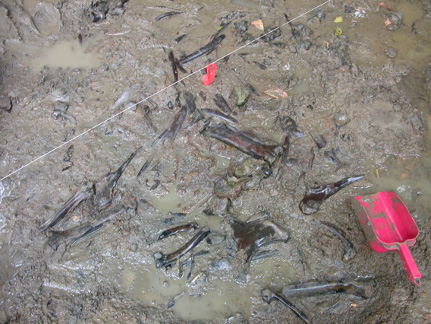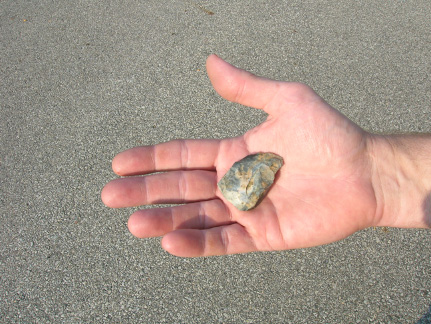
CMC Blog
Where the “Buffalo” Roam(ed)
By: Glenn W. Storrs, Ph.D., Withrow Farny Curator of Vertebrate Paleontology
Cincinnati Museum Center’s vertebrate paleontology collection holds many fossils and sub-fossil bones gathered at Big Bone Lick, Kentucky, about 20 miles south of CMC. The “lick” is known as the birthplace of American vertebrate paleontology, in recognition of the first organized excavations conducted there in 1807 by William Clark at the behest of President Thomas Jefferson. Clark’s co-leader of the Corps of Discovery expedition across the Louisiana Purchase, Meriwether Lewis, had also visited Big Bone Lick at Jefferson’s request. The great majority of bones that have been found at the site are those of plant-eating mammals that visited the area to lap up salt from the saline soils bordering the site’s salt springs, hence “lick.” Species whose remains have been collected there include the American Mastodon, Columbian Mammoth, Ancient Bison, Harlan’s Ground Sloth and Woodland Muskox. In addition to these extinct forms, modern mammals are also known from the site. These include Black Bear, Plains Bison and White-tailed Deer. While the deer still occurs in the Northern Kentucky region, the bison disappeared from the area about 200 years ago, after the arrival of European/colonial hunters. The mastodon, mammoth and other extinct “megafauna” disappeared around 10,000 years ago near the end of the last “Ice Age,” the Wisconsinan Stage of the late Pleistocene epoch.
In September 2008, CMC excavated modern bison bones (Bison bison) that had recently been discovered in the channel of Big Bone Creek, the shallow stream that traverses the valley containing the lick. Remains of at least five sub-adult animals were collected, as were a dozen Native American stone artifacts found in close association with the bones. The artifacts were identified as expedient butchering tools that had been manufactured on-site from local materials and discarded after use.
The bones and tools are evidence that the lick was a prehistoric bison kill and butchering site, an archaeological feature rarely found east of the Mississippi River. The recognition of human predation as a source of zoological remains at the lick suggests that this mechanism may also be responsible for the presence of the numerous mastodon and mammoth bones uncovered at the site. Indeed, the 1807 Clark excavations at the location collected the first Paleoindian projectile points discovered in the Americas, suggesting human predation of salt-seeking Ice Age “elephants” at Big Bone Lick (while mammoths are true members of the elephant family, mastodon should be considered as elephant “cousins”). These projectile points now reside in the archaeological collection of Cincinnati Museum Center.

Bison bones as exposed in the floor of Big Bone Creek.

Flint knife discovered among the bones.
Museum Admission
Includes Cincinnati History Museum, Museum of Natural History & Science and The Children's Museum
| Adult: | $22.50 |
| Senior: | $15.50 |
| Child: | $15.50 |
| Member Adult: |
FREE |
| Member Child: |
FREE |
Members receive discounts!
Become a Member today to save on programs, exhibits and films throughout CMC.
Museum Hours
Open Thursday – Monday
10 a.m. to 5 p.m.
Closed Tuesday and Wednesday
Closed Thanksgiving Day and Christmas Day
Member’s-only early entry: Saturdays at 9 a.m.
Customer Service Hours:
Monday – Sunday, 9 a.m. to 5 p.m.

